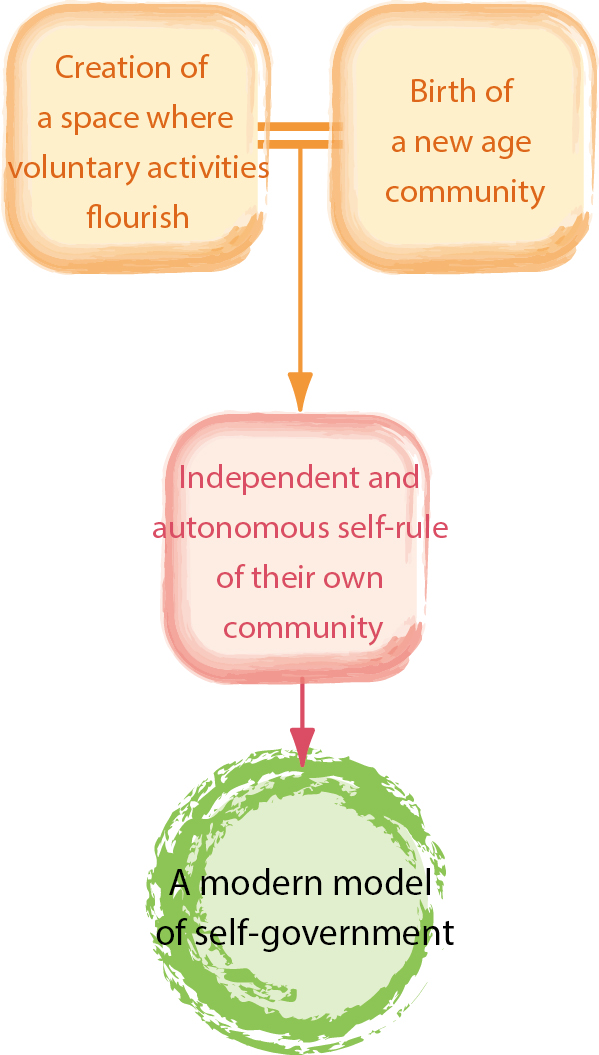The Base of Community Welfare
The Evolution of Shichiku – Parents’ Home Living Room (1)
Established on October 2014, Shichiku has been making rapid progress. Here, let me share an e-mail that I received from Ms. Kawada recently:
* * *
In my place since yesterday, we started having winter scenery. This morning, I was concerned about the road conditions for those who would attend the activities of Shichiku today. Yet, despite my concern, as many as 40 people gathered there.
It is my pleasure to see everyone smiling as they enjoy conversation.
The local men prepared business cards that carry the title “Supporter of ‘Shichiku – Parents’ Home Living Room’.” They treat with care and concern all those who need help.
Those who planned to do calligraphy prepared necessary things for persons with physical disabilities who wanted to do it together with them. From what I observe, I think Shichiku has surpassed My Parents’ Home in terms of creating a positive space.
After the new year began, many participants enjoyed folding paper cranes. They put many of those tiny cranes on the sliding screen paper to make it look like a field of rape blossoms. They planned to give it to the nursery school children who visit once every two months and to those graduating from nursery school. Those who do not fold the cranes glue them onto paper.
The people who do not understand our activities might think that the participants are undergoing rehabilitation of their fingers. Well, in fact, they are just having fun while imagining the smiles on the children’s faces.
* * *
As I observe the positive space created by people ranging from children to the elderly, who started these voluntary activities, and its ripple effect on the community, I think that this could be the birth of a new kind of community in a new era and that it might become a modern model of “natural self-autonomy” – a Japanese tradition in which people rule their own community independently and autonomously without the government. If this new community model spreads to the entire Niigata City, it might become a model of local autonomy. What is happening here may be unprecedented, so much so that I even think it might go as far as triggering a change in the state of the nation; and I am expecting that it might become a breakthrough in resolving the issues of the ageing population, as well as the issue of the diminishing number of children.
The Evolution of Shichiku – Parents’ Home Living Room (2)
At Shichiku, when they know they would be expecting many visitors and the parking spaces might not be enough, someone voluntarily reserves for parking spaces in the neighborhood, and when the day arrives someone voluntarily guides the visitors to the parking lot. When they need to prepare food that they did not plan on cooking, some persons volunteer to come up with a good menu. As such, the people who consider Shichiku as their own home and take the initiative of doing things without any instructions or the leadership of Ms. Kawada seem to be increasing.
Furthermore, many local nursery school and elementary school children come to Shichiku and it has become a place they feel they belong to. I expect this place might become one way to beat school refusal and bullying. Once such Living Rooms spreads all over the community, we may be able to witness a community of mutually supportive people that harnesses the power of the citizenry, something that Japan needs in the future. It is exciting to think about what Community Living Rooms can do to people.

